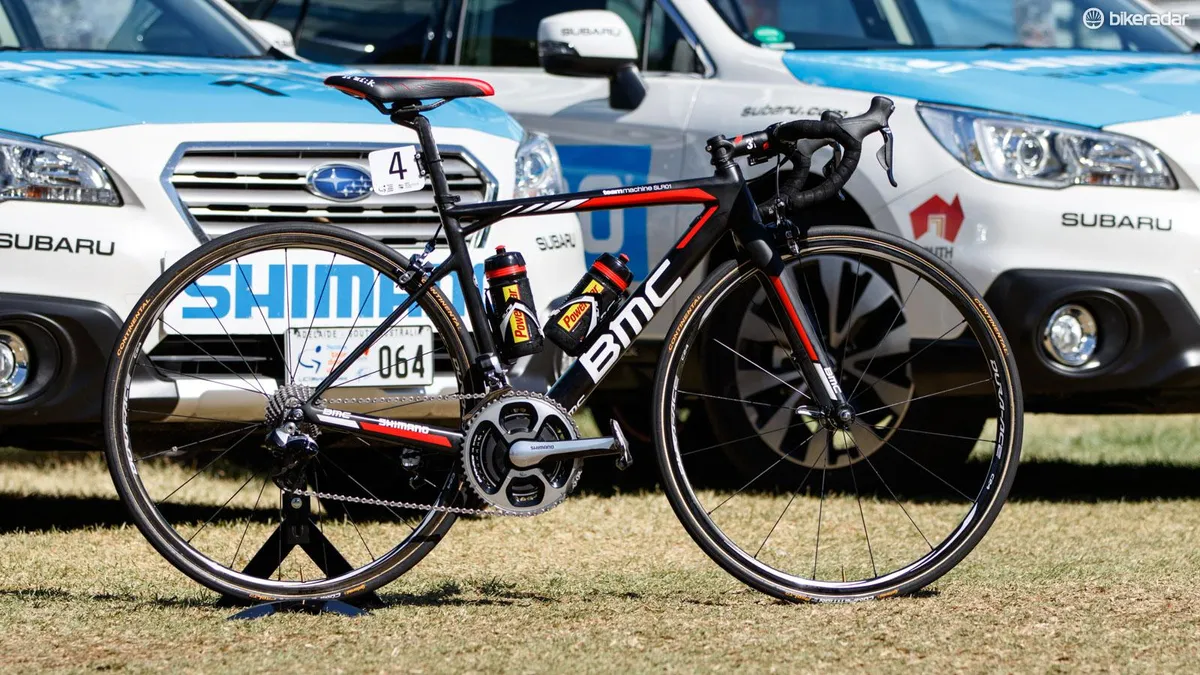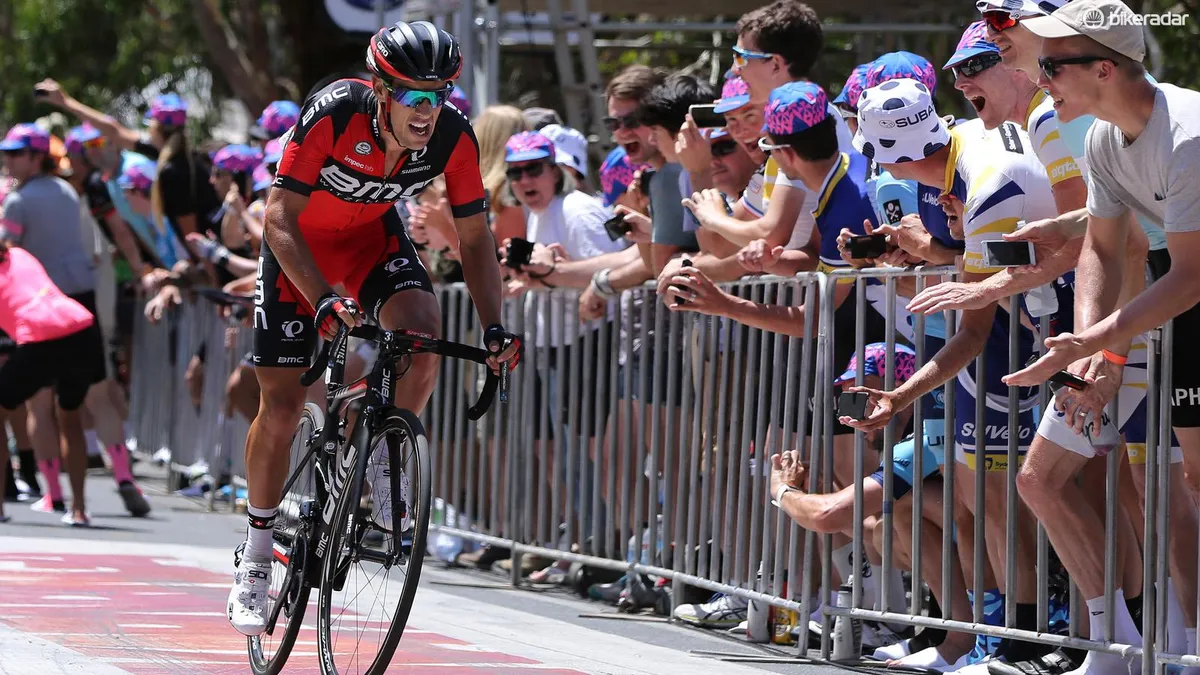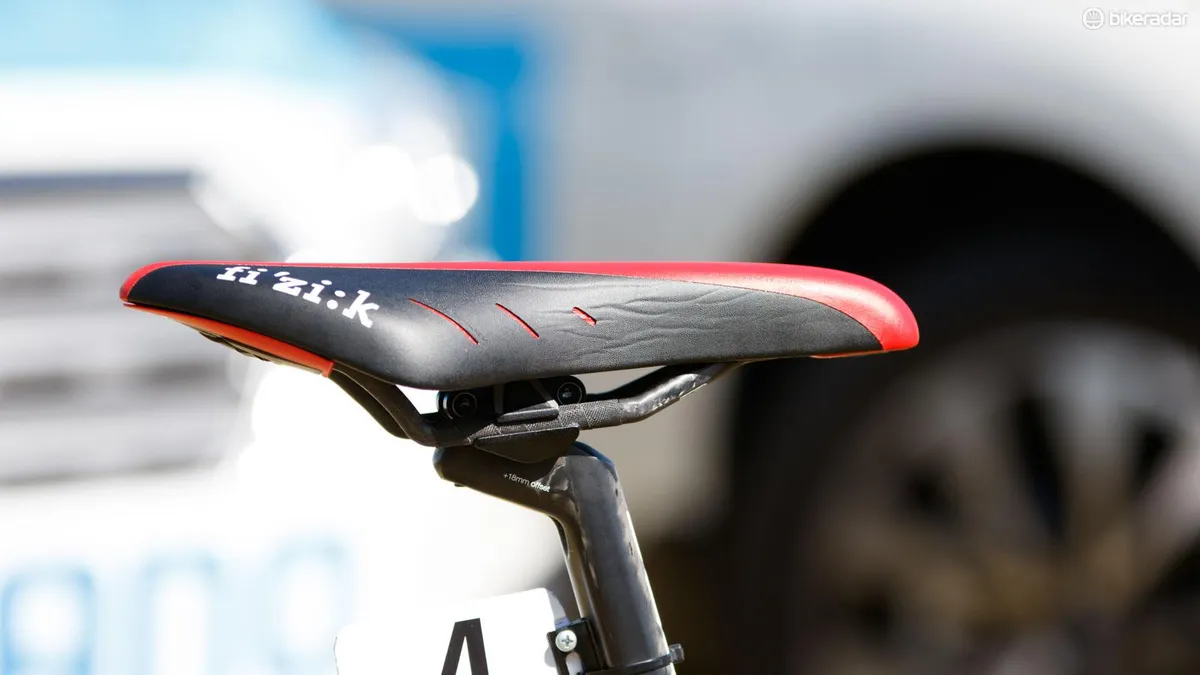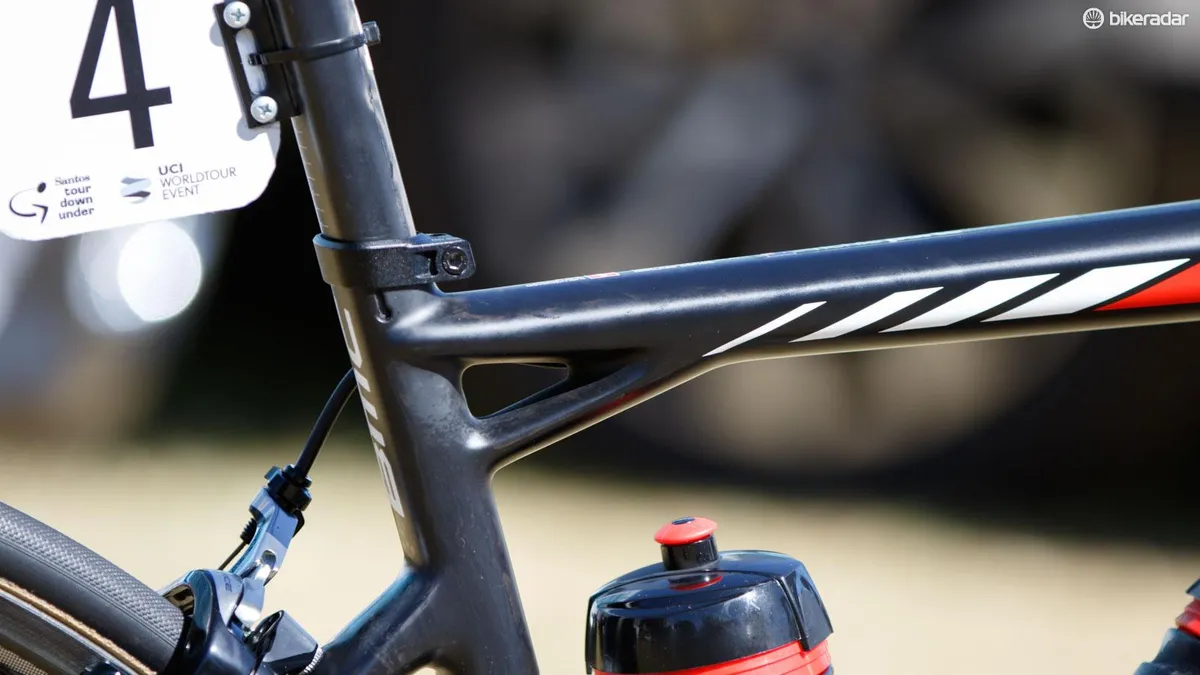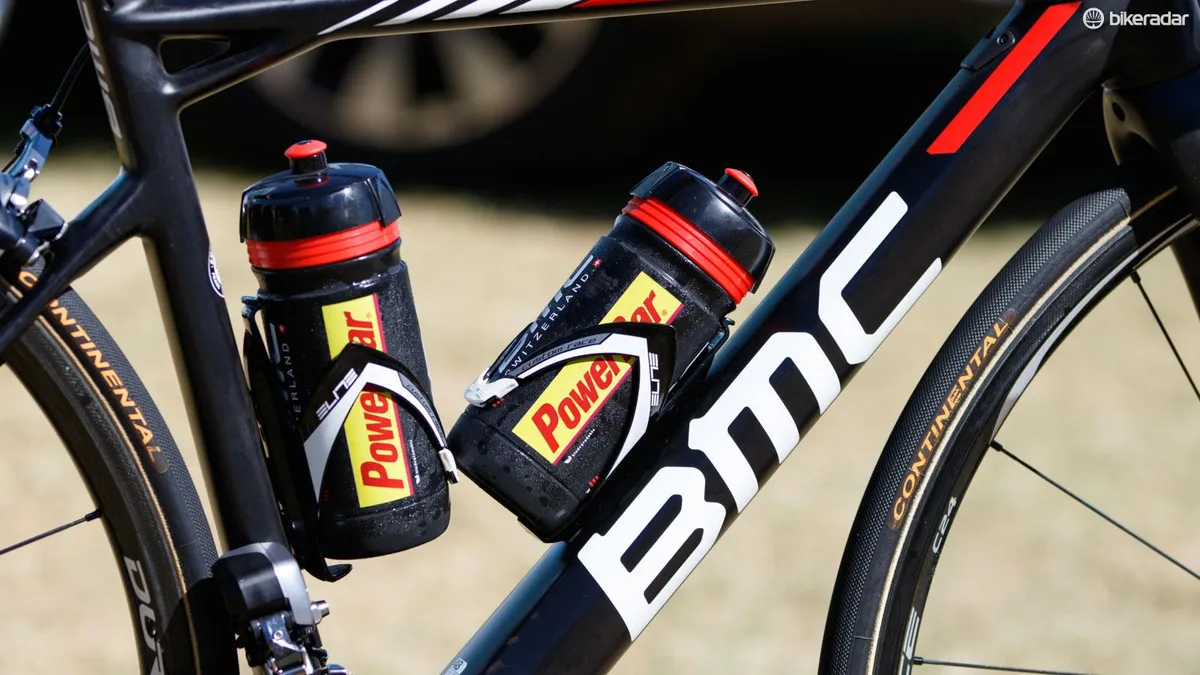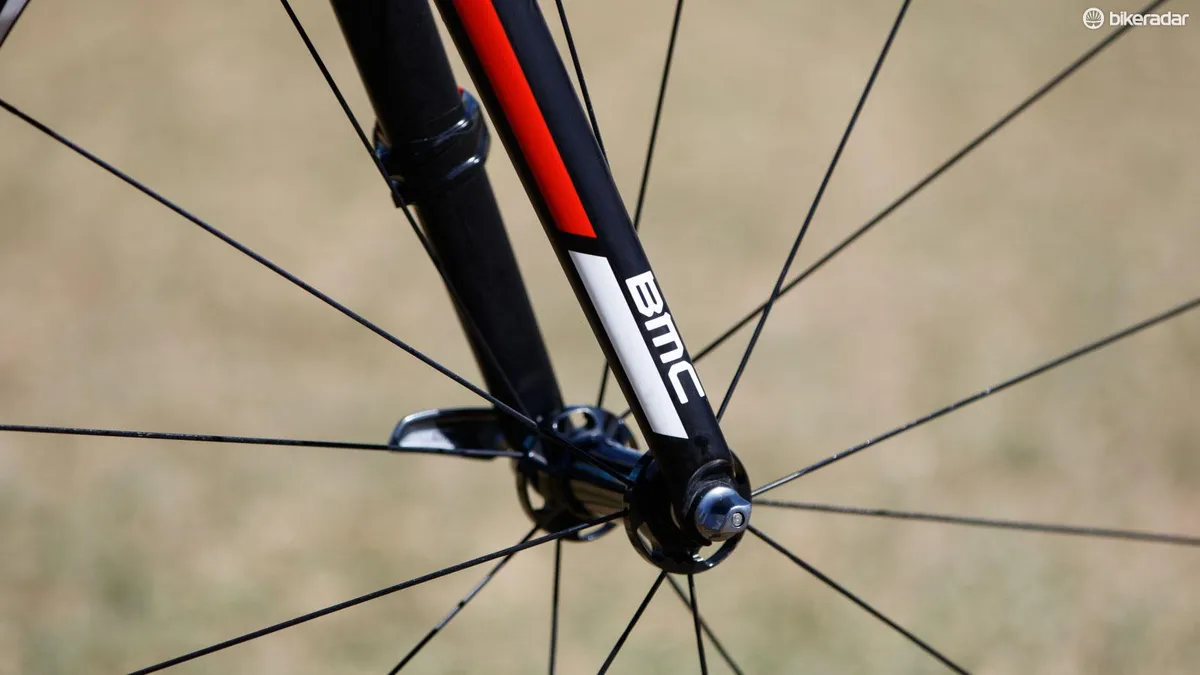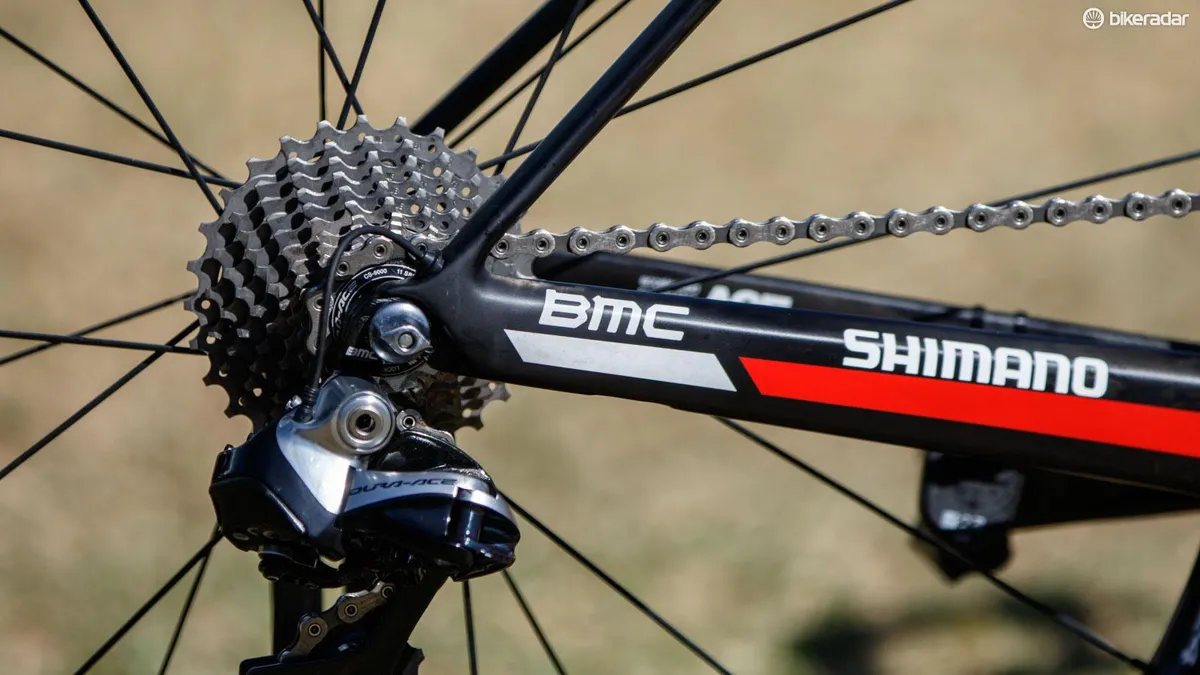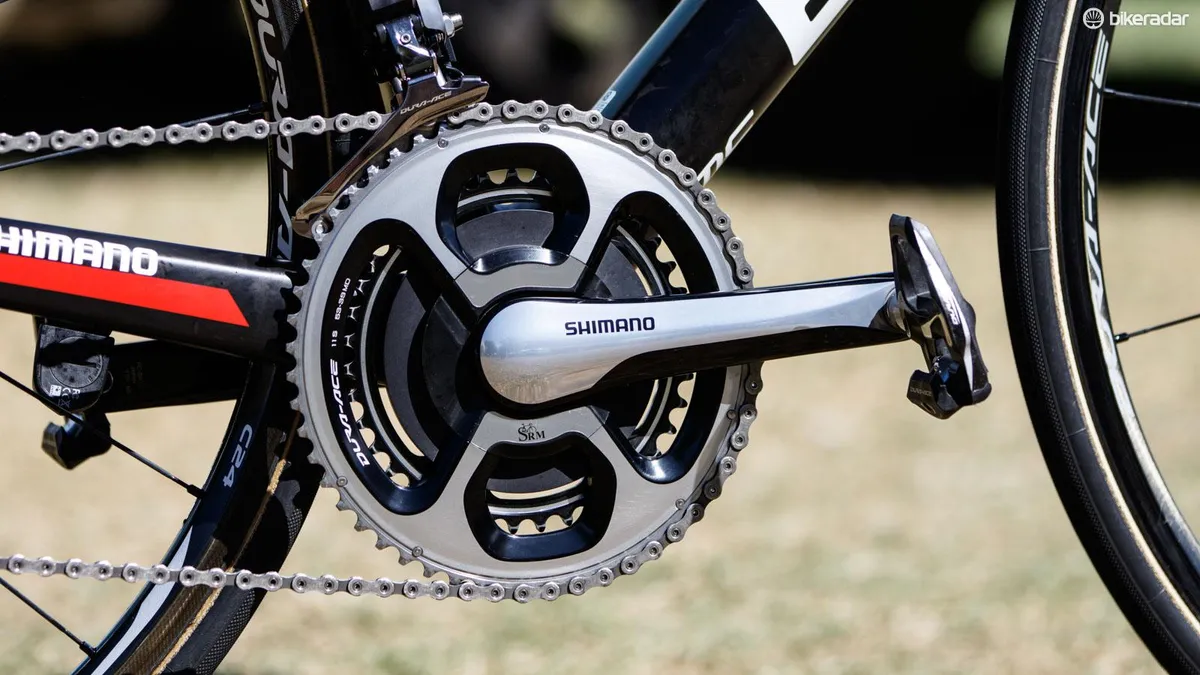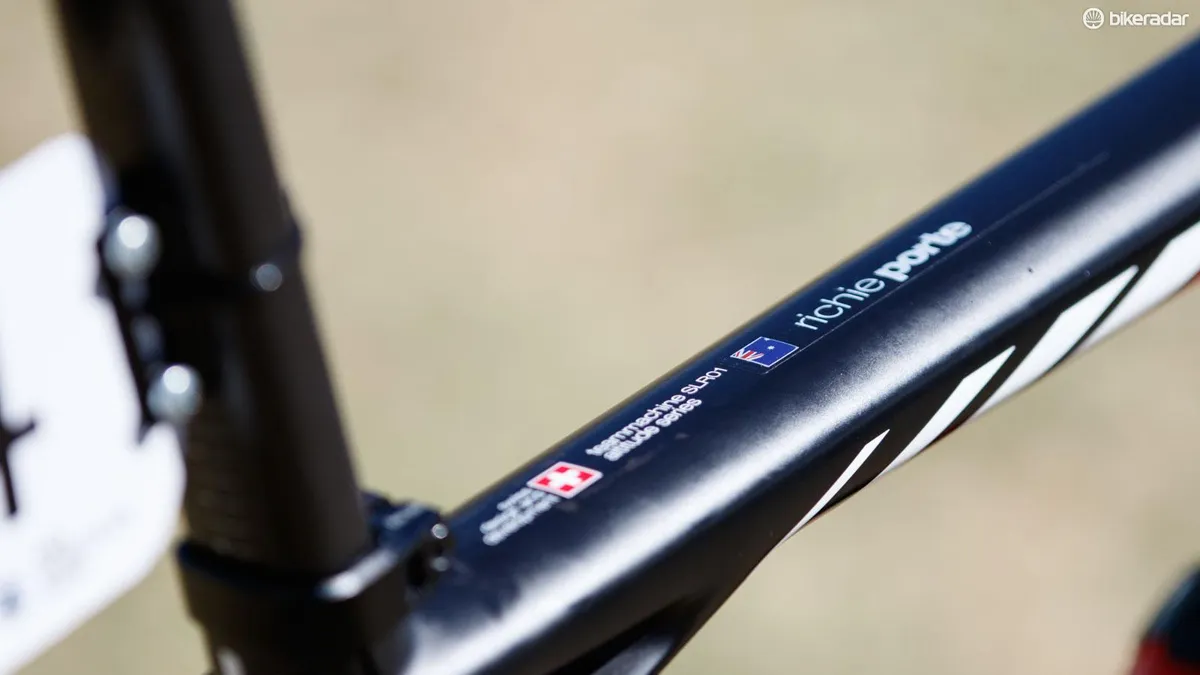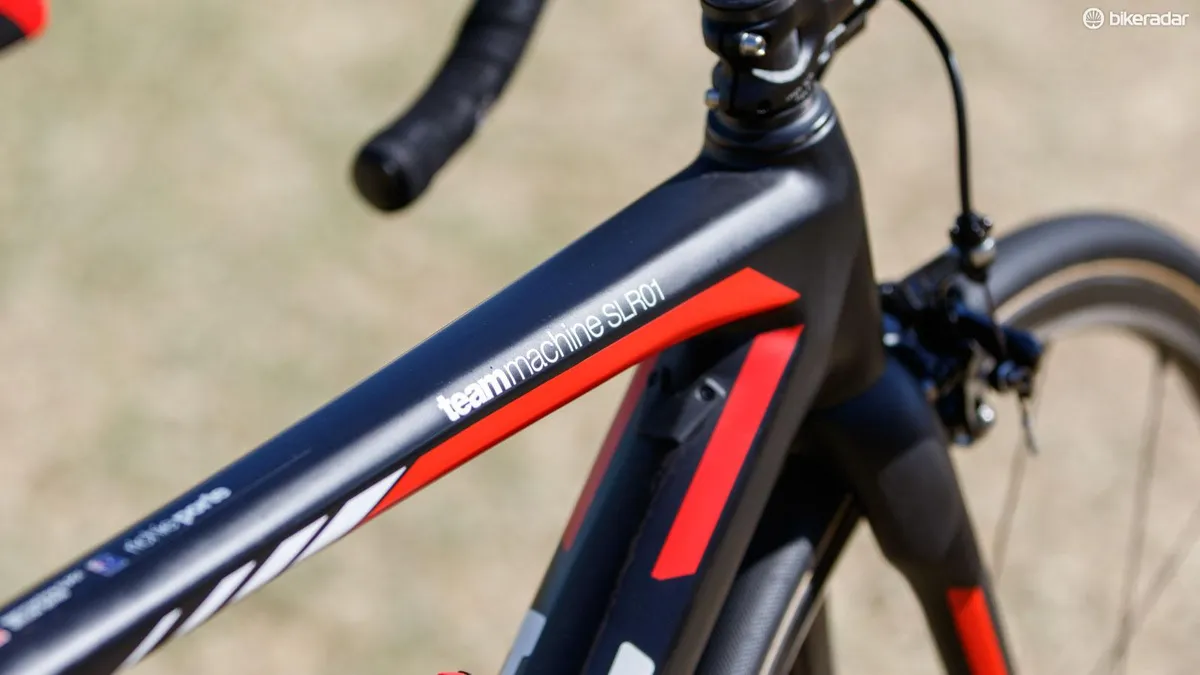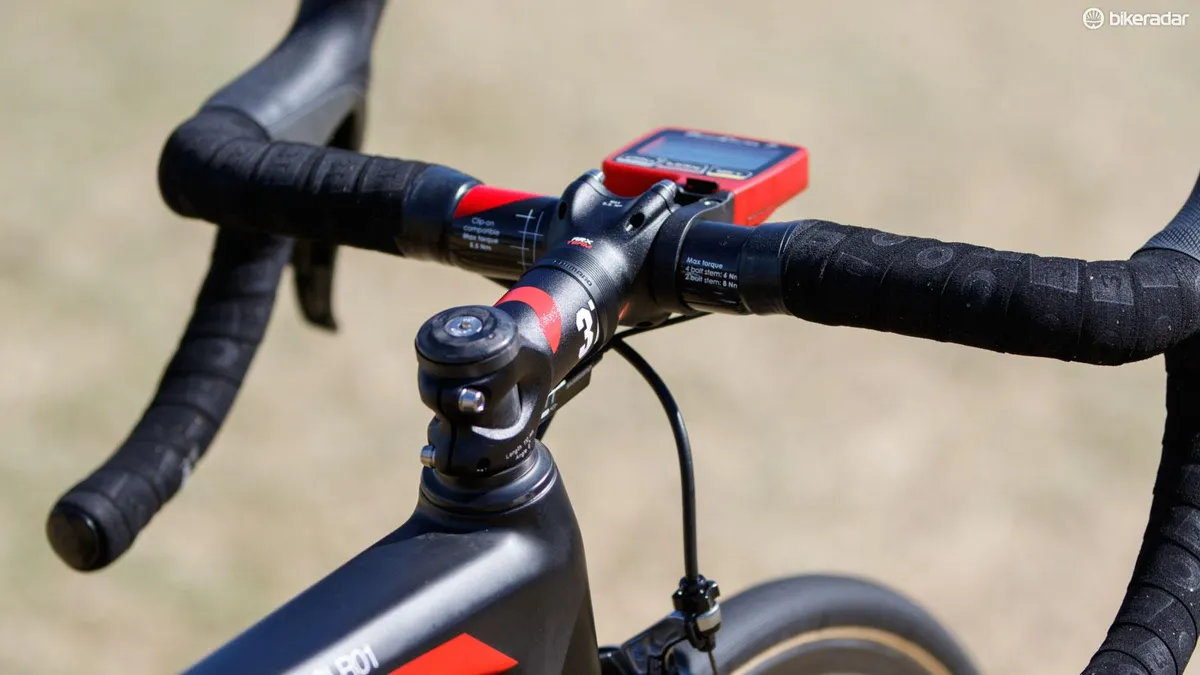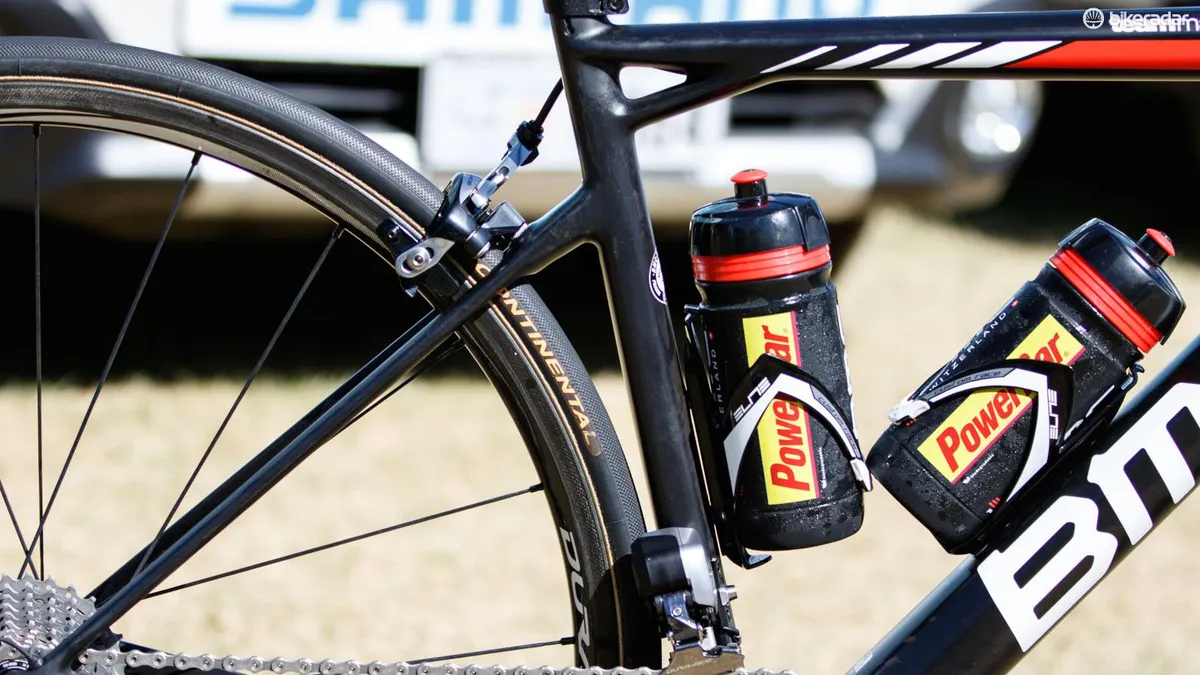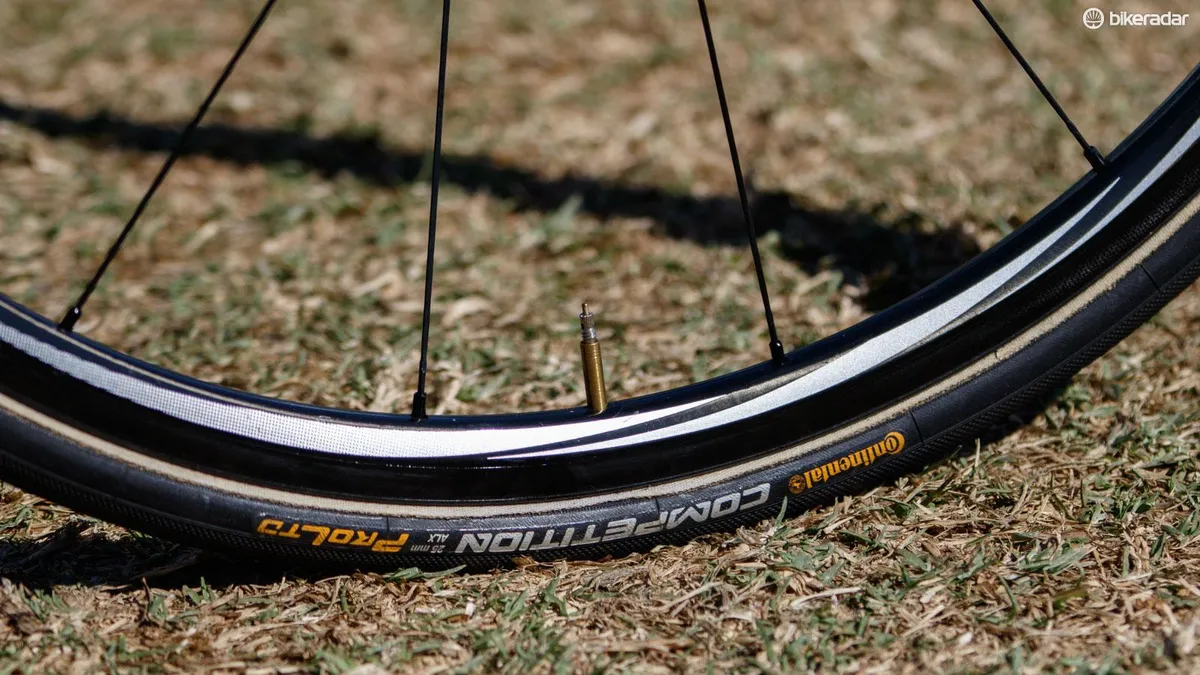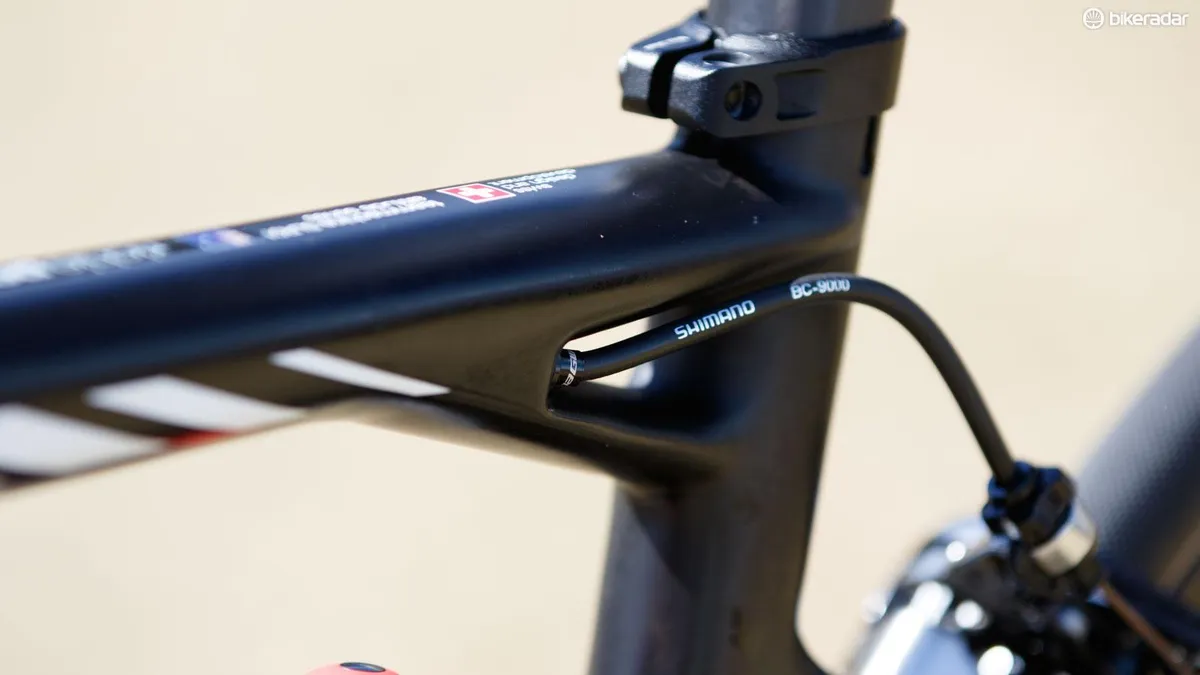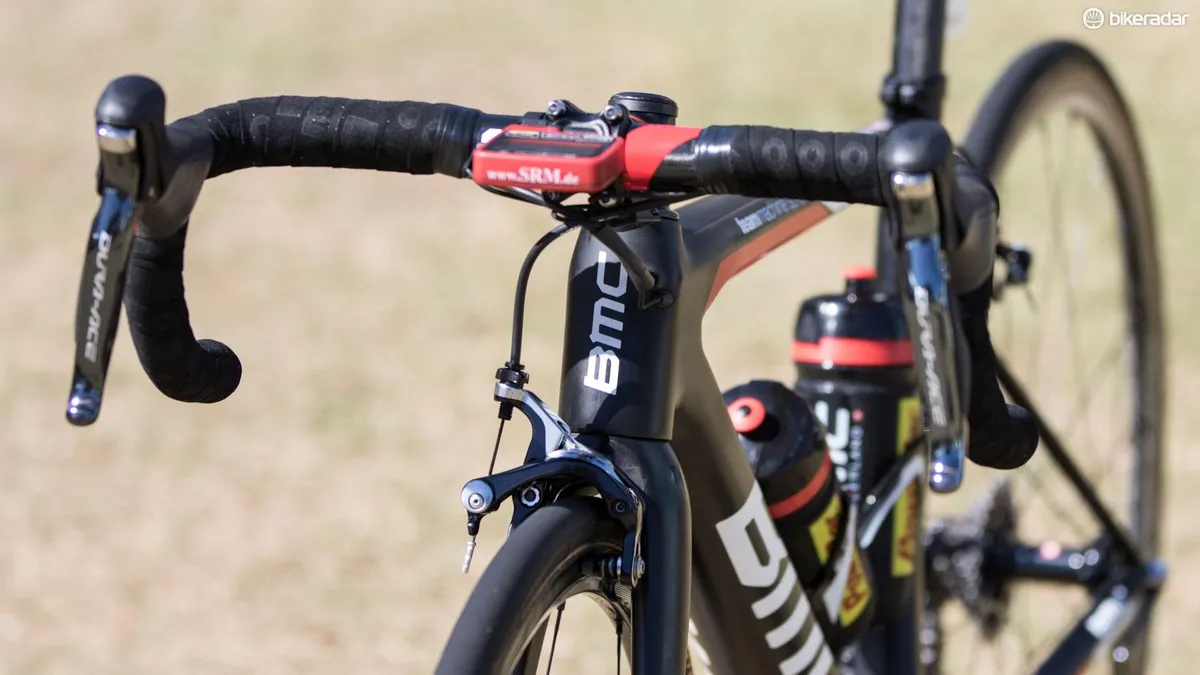For 2016, Richie Porte has changed to the red and black livery of BMC. With a new team, Porte has his sights set high this year, with the likes of the Tour de France and the Olympic road race both potential targets for the Tasmanian – who can both climb and time trial with the best of them.
The well-rounded Australian had spent the past four seasons as a key member of Team Sky, including winning Paris-Nice twice, Porte was an integral part in both Bradley Wiggins' and Chris Froome’s Tour de France yellow jersey wins.
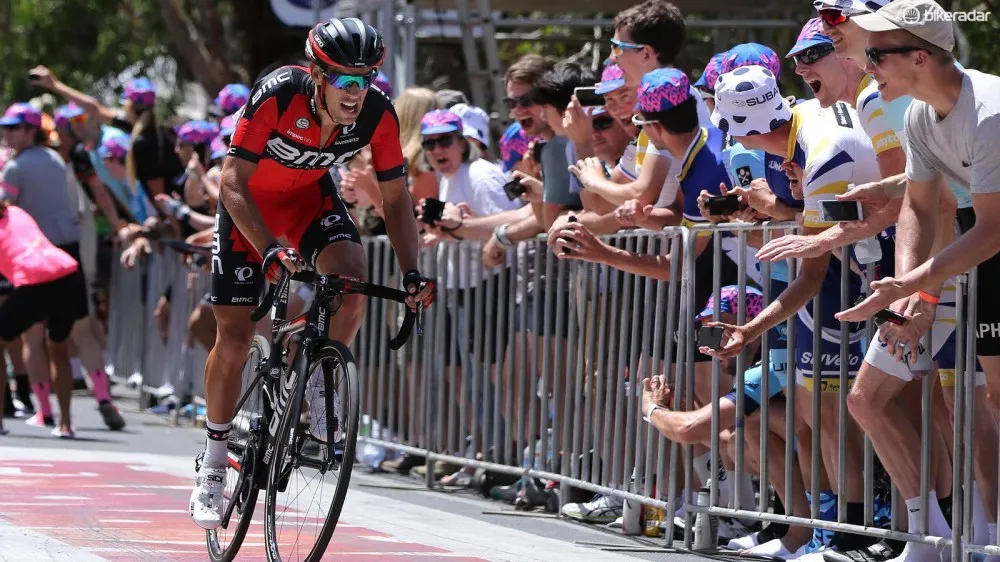
Here's the bike Porte rode to a solo victory in stage 5 at the Tour Down Under
Our sister site Cyclingnews recently had a sneak peek at Porte’s new BMC Teammachine ride, but here it is in detail – as recently ridden to a stage win and second place overall at the 2016 Santos Tour Down Under.
The spec remains the same (mostly)
Typically when riders swap teams, there are enormous adaptions in equipment to be made. Most notoriously, different saddles and pedals can wreak havoc on riders who have become accustomed to previous product. However, for Porte no such major changes have occurred. Despite swapping teams, his drivetrain, braking, wheels, pedals, shoes (Sidi) and even saddle choice have all remained constant.
Related reading: Richie Porte’s personal plans for 2016
Obviously different is the frameset, and there’s certainly no confusing the drastically different aesthetics of Porte’s BMC and his Pinarellos of past. Joining the rest of the team at the Tour Down Under, Porte was riding the brand’s highly acclaimed (by us) Teammachine SLR01.
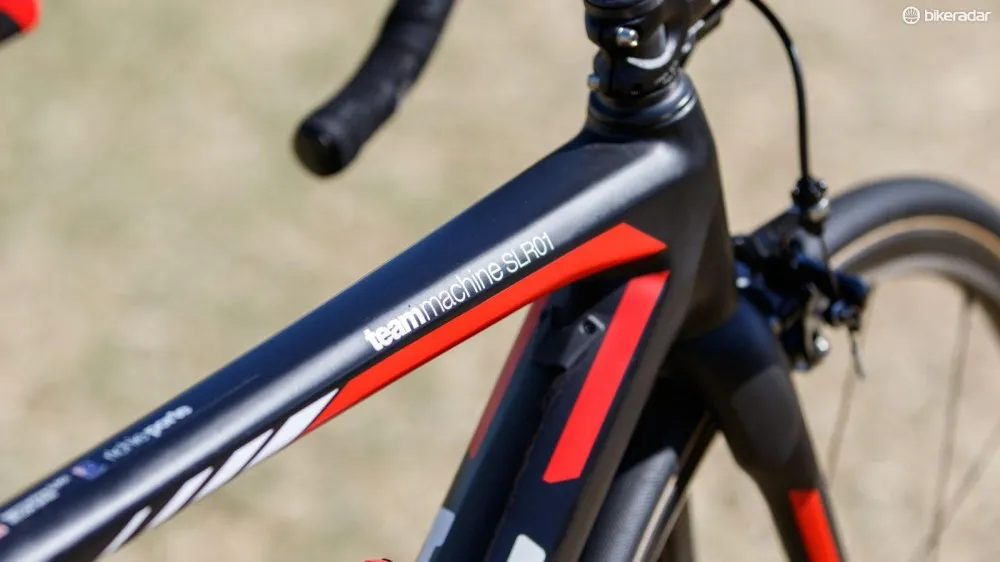
The BMC Teammachine SLR01 is a bike we've certainly seen before
The current BMC Teammachine is recognised for being a jack of all trades. The Swiss brand itself states that it’s not the lightest, stiffest, most aero or best in comfort. Rather, BMC says it has the best balance of all, and that's something that leads to a winning bike – something our review experience backs.
Related reading: Rohan Dennis' 2016 BMC Teammachine SLR01
Riding the smallest size Teammachine that BMC offers, Porte is on a surprisingly tiny 48cm frame. Such a size choice is commonplace among the world’s elite as they seek to ride in ultra low and aggressive positions that only smaller frame sizes can allow.
This small frame is nothing new to Porte, with the former triathlete coming from an even smaller 46.5cm Pinarello Dogma F8. Maybe a little more upright than before, his position is much the same from when we last looked at his Team Sky bike.
Dead weight
Perhaps most notable of Porte’s BMC is its 6.8kg weight, dead on with the UCI’s limit. Speaking with long-time BMC mechanic Ian Sherburne, this is no coincidence. The team have custom weights that are inserted into the SRM crank’s spindle in order to bring up a below-weight bike to the minimum allowed.
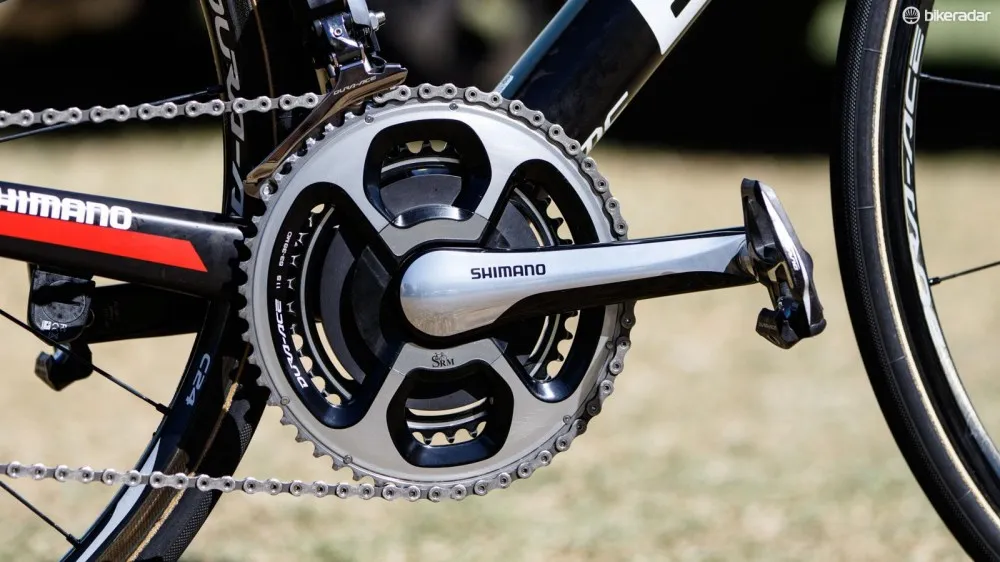
Believe it or not, weights are added into the spindle of the SRM power meter
Of course, wheels heavier and deeper than the 1,150g Shimano Dura-Ace C24 tubulars used here would likely bring the bike’s weight over the minimum limit without the need for such weights. Depending on the stage profile, Porte is likely to use Shimano C35 or even C50 wheels.
Either way, the addition of custom weights to a bike already fitted with a power meter and head unit proves just how dated the UCI’s minimum weight ruling really is. Thankfully, recently there's been talk of such a rule going the way of the dodo.
Related reading: Interview with the UCI and weight limits and discs
As mentioned above, Porte’s use of Shimano’s Dura-Ace Di2 11-speed shifting and associated brakes is unchanged since his team switch. Here, Porte uses a rather simple setup without any additional sprint or climbing shifters. Standard 53/39 chainrings up front are matched to a wider-range 11-28t cassette out back.
This new bike sees Porte return to a SRM power meter, something he used at Sky before the British team moved to Stages Cycling meters. Despite being the heaviest of the big names, the power meter originator remains the most popular choice in the pro peloton.
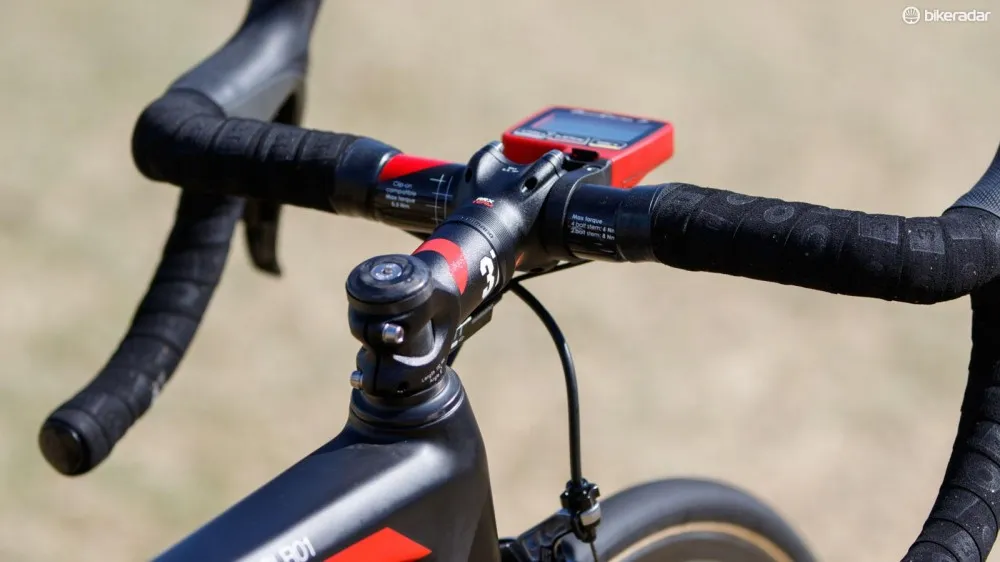
Porte is now on 3T components
Helping to pilot this ride, Porte chooses a 3T ErgoNova carbon handlebar, having previously used a Vibe Compact model from PRO. With a short reach and short drop, this compact bar is a popular choice amongst bike fitters and seemingly amongst the pros too.
A surprisingly common choice within the pro peloton, Porte uses a triathlon version of the Fizik Arione saddle. The overall shape is much the same as the standard road version, but it features far thicker padding at the nose.
Complete bike specifications
- Frame: BMC Teammachine SLR01 – size 48cm
- Fork: BMC Teammachine SLR01, 1–1/8 to 1–1/2in tapered
- Headset: Sealed (unbranded)
- Stem: 3T ARX II Team, 110mm, -6 degree (team issue)
- Handlebar: 3T ErgoNova Team, 40cm (c-c) (team issue)
- Tape: 3T Team
- Front brake: Shimano Dura-Ace BR-9000
- Rear brake: Shimano Dura-Ace BR-9000
- Brake levers: Shimano Dura-Ace Di2 STI Dual Control ST-9070
- Front derailleur: Shimano Dura-Ace Di2 FD-9070
- Rear derailleur: Shimano Dura-Ace Di2 RD-9070
- Shift levers: Shimano Dura-Ace Di2 STI Dual Control ST-9070
- Cassette: Shimano Dura-Ace CS-9000, 11-28T
- Chain: Shimano Dura-Ace HG-900
- Crankset: SRM Shimano 11-speed, 170mm, 53/39T
- Bottom bracket: C-Bear Ceramic
- Pedals: Shimano 9000 Dura-Ace
- Wheelset: Shimano Dura-Ace C24 tubular
- Front tyre: Continental Competition ALX LTD, 25mm
- Rear tyre: Continental Competition ALX LTD, 25mm
- Saddle: Fizik Arione K1 Braided
- Seatpost: BMC TeamMachine carbon, 15mm offset
- Bottle cages: Elite Custom Race (2)
- Computer: SRM Power Control 8 (PC7 pictured)
Critical measurements
- Rider's height: 1.72m (5ft 8in)
- Rider's weight: 62kg (137lb)
- Saddle height from BB, c-t: 695mm
- Saddle setback: 46mm
- Seat tube length (c-t): 475mm
- Tip of saddle to middle of bar: 510mm
- Saddle-to-bar drop: 79mm
- Head tube length: 108mm
- Top tube length (effective): 520mm
- Total bicycle weight: 6.80kg (15lb) (with SRM Power Control 7 head unit)
For more 2016 tech seen at the Tour Down Under, visit our hub page.
